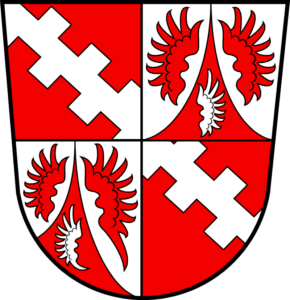Imperial County of Ortenburg

The Imperial County of Ortenburg is a small but influential state within the Holy Roman Empire. It is known for its strategic location on the banks of the Danube river, rich history, and culture, as well as its beautiful landscapes and friendly people.
- Coat of Arms/Flag: The coat of arms features a golden lion on a red background, symbolizing strength and courage. The flag is red and gold, with the lion emblazoned in the center.
- Status: The Imperial County of Ortenburg is a semi-autonomous state within the Holy Roman Empire, with a high degree of autonomy and self-governance.
- Country: Holy Roman Empire
- Capital City: The capital city is Ortenburg, located in the heart of the state.
- Other Settlements: Other notable settlements include the towns of Schönau, Hernstein, and Dürnstein.
- Current Ruler: The current ruler of the Imperial County of Ortenburg is Count Albrecht II.
- Local Ruler: The local ruler is the burgomaster of Ortenburg, Hans Schmidt.
- Government: The Imperial County of Ortenburg is governed by a council of nobles, led by the Count. The council is responsible for making laws and enforcing them, as well as managing the state’s finances and foreign relations.
- Legislature: The legislature is made up of a council of nobles and representatives from the towns and villages.
Demographics:
- The population of the Imperial County of Ortenburg is primarily German-speaking.
- There are also small communities of Czech, Italian, and Jewish residents.
Languages:
- German is the official language of the Imperial County of Ortenburg.
- Czech, Italian, and Hebrew are also spoken by minority communities.
Population:
- The population of the Imperial County of Ortenburg is around 15,000.
Religion(s):
- Christianity is the dominant religion in the Imperial County of Ortenburg, with the majority of the population being Catholic.
- There are also small communities of Jewish and Muslim residents.
Places of Interest:
- The Imperial County of Ortenburg is home to many beautiful castles, including the imposing Ortenburg Castle, which sits on a hill overlooking the town.
- The town of Schönau is known for its picturesque old town and the beautiful St. Mary’s Church.
- The town of Hernstein is home to the famous Hernstein Abbey, a beautiful and peaceful monastery.
Other Notable Residents:
- The Count’s advisor and chief councilor is Baron Ernst von Eberstein.
- The town of Dürnstein is home to the famous alchemist, Dr. Johann Bauer.
The Imperial County of Ortenburg is a small but influential state located within the Holy Roman Empire. It is known for its strategic location on the banks of the Danube river, rich history, and culture, as well as its beautiful landscapes and friendly people. The state is ruled by Count Albrecht II, a skilled diplomat and military leader who is respected by his people.
The state is governed by a council of nobles, led by the Count, and is responsible for making laws and enforcing them, as well as managing the state’s finances and foreign relations. The population of the Imperial County of Ortenburg is primarily German-speaking, with small communities of Czech, Italian, and Jewish residents. The official language is German, but other languages such as Czech, Italian, and Hebrew are also spoken. The population is around 15,000 and the dominant religion is Catholicism, with small communities of Jewish and Muslim residents.
The Imperial County of Ortenburg is home to many beautiful castles, including the imposing Ortenburg Castle, which sits on a hill overlooking the town. The town of Schönau is known for its picturesque old town and the beautiful St. Mary’s Church. The town of Hernstein is home to the famous Hernstein Abbey, a beautiful and peaceful monastery. Additionally, the Count’s advisor and chief councilor is Baron Ernst von Eberstein, and the town of Dürnstein is home to the famous alchemist, Dr. Johann Bauer.
As for the mythical or folklore monsters or creatures, the Imperial County of Ortenburg is known for the legend of the “Danube Serpent”, a giant serpent said to reside in the Danube river and terrorize the nearby villages. However, this legend is widely considered to be nothing more than a story passed down through generations, and there is no real evidence of such a creature existing.

 Buy me a coffee
Buy me a coffee